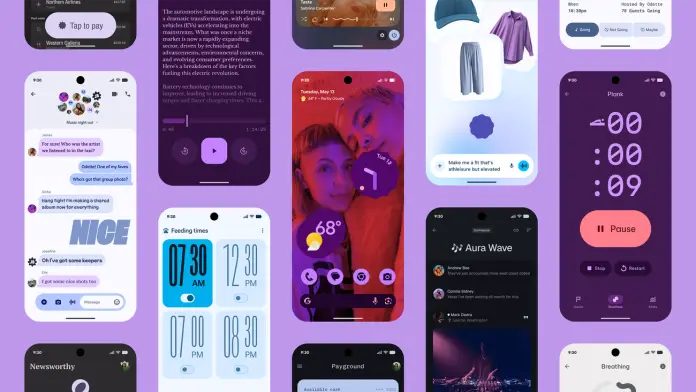The latest development from Google is set to transform the way small business owners interact with Android devices. With the introduction of Material 3 Expressive, Google aims to elevate the user experience by expanding customization options, enhancing engagement through fluid animations, and creating a more personal touch for all Android users.
This initiative builds on the existing Material You framework, which has successfully made devices feel more relatable and user-centric. As more businesses adopt digital tools, understanding these innovative changes can be crucial for improving efficiency and connectivity with customers.
Material 3 Expressive offers an array of new customization features. Small business owners can modify their devices to match their brand identity more closely, creating a cohesive experience that reinforces their marketing messages. Imagine an owner customizing the look of their device with brand colors for a more professional feel during client meetings or video calls. Such personalized touches can help reinforce brand identity and create a memorable impression.
One of the standout features of this update is the introduction of more fluid, springy animations that enhance interaction. For example, the way notifications respond when dismissed provides a richer experience, and the satisfying haptic feedback adds a layer of engagement. For a small business owner managing numerous notifications, this new system could make daily tasks feel less tedious and more gratifying—important when improving overall productivity is at the forefront.
Many small business owners seek efficiency in their daily operations, and the improved user experience with Material 3 Expressive could provide a crucial edge. The intuitive nature of the new animations helps reduce the cognitive load associated with managing multiple tasks. This could free up time for small business owners to focus on what matters most—growing their business.
While the benefits are compelling, small business owners should also be aware of potential challenges when adapting to these changes. Transitioning to a new operating system or interface might involve an initial learning curve. Owners must assess whether they or their teams are comfortable with these updates before fully integrating new features into their workflow. Additionally, compatibility with existing applications and systems should be investigated to ensure a seamless transition.
Implementing new technologies can bring unease, particularly if staff members are accustomed to older systems. Training may be necessary to ensure that all team members are proficient with the updated functionalities. However, Google’s commitment to enhancing user experience promises long-term advantages that could outweigh the temporary discomfort of adjustment.
Despite the concerns, the potential for these updates to bolster small business operations is significant. A more personalized and expressive user interface not only fosters better relationships with clients but can also improve team morale by making interactions with technology more pleasant.
Although the upgrade is appealing, small business owners should approach it thoughtfully, ensuring that the transition supports their specific needs. The insights gained from recent developments in design and technology can help businesses stay relevant and competitive in an increasingly digital world.
For more details on Material 3 Expressive and how it can elevate your Android experience, you can read the full announcement here.
Image Via Android



